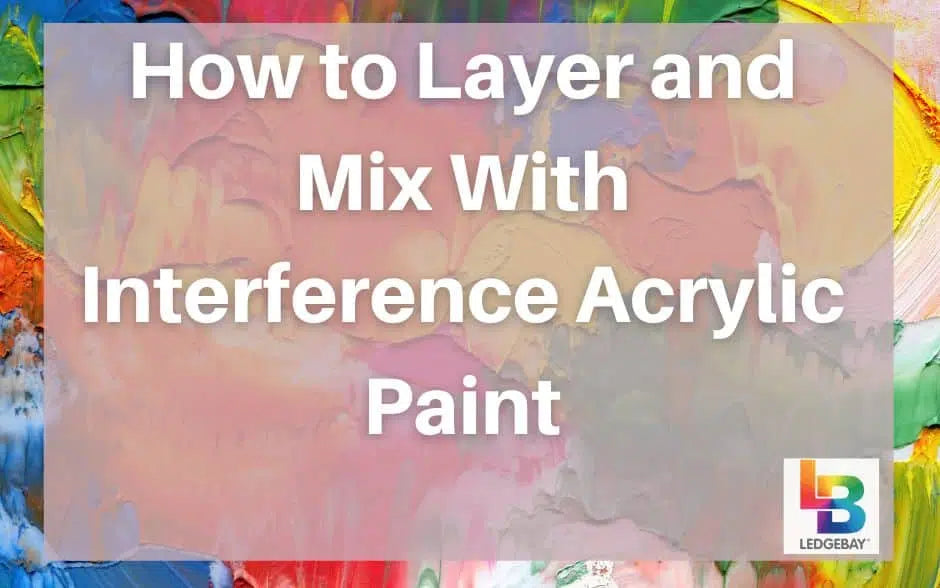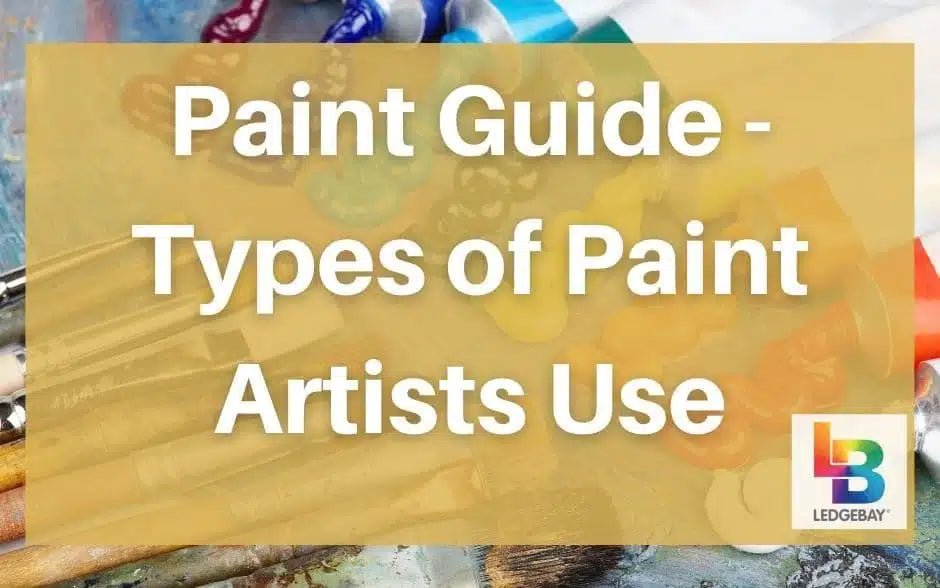If you love painting, but don’t know where to start, then you’ve come to the right place! I’m going to share my tried-and-true tips with you onhow to start to paint , so you can find yourunique painting style .
People fall in love withpainting for various reasons . Yet, thereason at the top of everyone’s list is that painting makes you happy. It helps boost self-esteem and manage anxiety.
Plus, you get to explore your inner artist whilecreating beautiful and unique works of art . What’s not to love?
So, if you're looking to start painting, this actionable checklist will help you move in the right direction.
As you’re starting out in the beginning, you’ll need a fewdifferent-sized brushes .
The brushes you’ll end up using the most are the ones with the flat top, known as Filbert brushes. So, it’s good to buy those in different sizes.
You’ll also need one or two liner brushes with long, thin bristles. They’ll come in handy when you’repainting small details and emphasize edges .
The best foracrylic paints is synthetic brushes. They’re neither too stiff nor too soft. Many great brands on the market are affordable and last for a long time. Ours have lasted for quite some time, and they’re still going strong!
For starters, keep two jars ofwater next to you as you’re painting . Use one jar for diluting yourpaint or blending colors. Use the second jar or cleaning your brush when changing colors.
When you’re donepainting for the day, always wash your brushes. You can use mild soap and lukewarm water toremove any paint that remains.
Then, lay them flat overnight. Once they’re fully dry, store them upright to help prevent damaging the bristles.
Acrylic paints are easy to use, which makes them great for beginners. You canadd new layers without affecting the layers underneath.
They’re known for their quick drying time, so you won’t have to worry about smudges or overnight drying time. They’re also cheaper than oilpaint and watercolors .
Oil paints are more challenging to work with. Yet, they’re known for creating rich, saturated colors and bright shades.
Watercolors are different because they always react to new layers. Anytime you add a new layer, the bottom layer will seep through. While this may make color mixing fun, it makes texturing quite tricky.
One of ourpainting tips for beginners is all about color choices.Newbies tend to be a bit hesitant when using bright colors in their paintings .
I definitely was! Yet, there’s a way to incorporate bright colors without going overboard.
The best way to do this is by using contrastingcolors to enhance your painting . To help you with that, keep a color wheel on hand as a reference.
Remember thatacrylic paints become darker as they dry . If you want to create a lighter color, you can add a dab of white to it. The white will turn them into a slightly more opaque, lighter shade of color.
Luckily, the internet is a great source filled with plenty of images to use. Photos are a great way to hone your skills. After that, you canset up your easel in public, maybe at the park or by thebeach . Nothing beats painting areal-life image!
Here are four basicbrush strokes you can apply to your next painting.
Apalette knife is a must-have tool for every artist. It adds a 3D effect and brings yourpainting to life . There are many affordable choices available.
However, if you’re stuck and don’t have a palette knife on hand, you can use a craft stick. Even an old credit card will do the trick!
I mentioned earlier thatacrylic paints dry fairly quickly. Toslow the drying time, use a spray bottle to mist the colors as you’re mixing them on the palette. A fine-mist sprayer works the best.
Onetrick I usually do is mist the painting surface as well. This works great, especially when Ineed to blend colors andcreate various shades.
Another option is to use an extender, also called a fluid retarder. This slows down drying time considerably. You’ll find that this comes in handy when you want to mix, blend, or create subtle nuances with your colors.
Somepalettes work to keep your paint wet for longer by retaining the moisture within it. You can buy a moisture-retaining palette, or you can make your own.
It allows you to seehow well the colors are working together . Plus, seeing your work from a distance cangive a sense of the painting’s overall composition.
The good news is that you canfix almost any mistake once the paint has dried. Simplypaint over your mistake by adding a new layer . This is easier withacrylic paint because new layers don’t affect the ones below them.
Many times when we embark on a new project, excitement takes over, and we rush into things. Then, as soon as we hit our first stumbling block, we give up. That’s one of the reasons why people quit all sorts of things in life.
Withpainting , practice is essential. You’ll notice that yourtechnique improves from day to day, from painting to painting.
Get into the habit of painting once a day. If you have a busy schedule, then mark it down in your calendar. This way, you’ll be able to set time aside to focus on your artwork at least once a month.
When you get into the routine of beingcreative, it becomes an integral part of your life. So, keep at it, enjoy the process, and let yourinner artist shine through.
I hope thesepainting tips for beginners have shown you the basics of how to start painting. These 11 actionable tips for beginners listed are some of thefundamentals of painting . They can help youcreate unique works of art while reducing the risk of any mishaps.
Try to get in a few brush strokes each day until you feel ready tomaster an entire painting . Before you know it, you’ll be hooked just like the rest of us!
To view our complete gallery of our paint by numbers kits for beginners,CLICK HERE!
People fall in love withpainting for various reasons . Yet, thereason at the top of everyone’s list is that painting makes you happy. It helps boost self-esteem and manage anxiety.
Plus, you get to explore your inner artist whilecreating beautiful and unique works of art . What’s not to love?
So, if you're looking to start painting, this actionable checklist will help you move in the right direction.
How to Start to Paint - Painting Tips for Beginners
1. Keep an Assortment of Brushes
[amazon box="B07ZMJKMWQ"]As you’re starting out in the beginning, you’ll need a fewdifferent-sized brushes .
The brushes you’ll end up using the most are the ones with the flat top, known as Filbert brushes. So, it’s good to buy those in different sizes.
You’ll also need one or two liner brushes with long, thin bristles. They’ll come in handy when you’repainting small details and emphasize edges .
The best foracrylic paints is synthetic brushes. They’re neither too stiff nor too soft. Many great brands on the market are affordable and last for a long time. Ours have lasted for quite some time, and they’re still going strong!
2. Take Care of Your Brushes
Your brushes are your most prized possession. Keeping them clean and well-maintained should be your number one priority.For starters, keep two jars ofwater next to you as you’re painting . Use one jar for diluting yourpaint or blending colors. Use the second jar or cleaning your brush when changing colors.
When you’re donepainting for the day, always wash your brushes. You can use mild soap and lukewarm water toremove any paint that remains.
Then, lay them flat overnight. Once they’re fully dry, store them upright to help prevent damaging the bristles.
3. Pick Your Painting Medium
The term ‘medium’ typically refers to different paint types, such asacrylic ,oil paint , or watercolors.Acrylic
[amazon box="B08BNNV3JY"]Acrylic paints are easy to use, which makes them great for beginners. You canadd new layers without affecting the layers underneath.
They’re known for their quick drying time, so you won’t have to worry about smudges or overnight drying time. They’re also cheaper than oilpaint and watercolors .
Oil
[amazon box="B06XCWSD2C"]Oil paints are more challenging to work with. Yet, they’re known for creating rich, saturated colors and bright shades.
Watercolor
[amazon box="B08S33S889"]Watercolors are different because they always react to new layers. Anytime you add a new layer, the bottom layer will seep through. While this may make color mixing fun, it makes texturing quite tricky.
4. Embrace Bright Colors
[amazon box="B08V49R8S5"]One of ourpainting tips for beginners is all about color choices.Newbies tend to be a bit hesitant when using bright colors in their paintings .
I definitely was! Yet, there’s a way to incorporate bright colors without going overboard.
The best way to do this is by using contrastingcolors to enhance your painting . To help you with that, keep a color wheel on hand as a reference.
Remember thatacrylic paints become darker as they dry . If you want to create a lighter color, you can add a dab of white to it. The white will turn them into a slightly more opaque, lighter shade of color.
5. How to Start to Paint - Find a Reference
You’ve bought your paint,brushes , palette—everything’s ready and set! Now what? This is where manybeginners falter because they don’t know what to paint .Luckily, the internet is a great source filled with plenty of images to use. Photos are a great way to hone your skills. After that, you canset up your easel in public, maybe at the park or by thebeach . Nothing beats painting areal-life image!
6. Get to Know Your Brush Strokes
Your brush strokes are ultimately what tell thestory of your painting . By varying your strokes, you can create different visual styles tomake your artwork stand out .Here are four basicbrush strokes you can apply to your next painting.
- Cross-hatching: use overlapping strokes from different directions to add texture
- Double-load: using a flat brush, apply two colors on the brush without mixing them
- Dry brush: cover the tip of the brush with little paint to apply light, brisk strokes
- Paint splatter: wet the brush slightly, then flick your wrist to create streaks of paint
7. Add Texture with a Palette Knife
[amazon box="B01G176P6I"]Apalette knife is a must-have tool for every artist. It adds a 3D effect and brings yourpainting to life . There are many affordable choices available.
However, if you’re stuck and don’t have a palette knife on hand, you can use a craft stick. Even an old credit card will do the trick!
8. Painting Tips for Beginners - Keep Your Paint Wet
[amazon box="B07C977XWR"]I mentioned earlier thatacrylic paints dry fairly quickly. Toslow the drying time, use a spray bottle to mist the colors as you’re mixing them on the palette. A fine-mist sprayer works the best.
Onetrick I usually do is mist the painting surface as well. This works great, especially when Ineed to blend colors andcreate various shades.
Another option is to use an extender, also called a fluid retarder. This slows down drying time considerably. You’ll find that this comes in handy when you want to mix, blend, or create subtle nuances with your colors.
Somepalettes work to keep your paint wet for longer by retaining the moisture within it. You can buy a moisture-retaining palette, or you can make your own.
9. Get a Better Perspective
Make a point tostep back often during your painting sessions to prevent tunnel vision. You can even take a 15-minute break and come back to look at it with fresh eyes.It allows you to seehow well the colors are working together . Plus, seeing your work from a distance cangive a sense of the painting’s overall composition.
10. Fix Mistakes After the Paint Has Dried
Don’t Panic! I think anyone learning how to paint should make this their new mantra. Mistakes are part of the artistic process.The good news is that you canfix almost any mistake once the paint has dried. Simplypaint over your mistake by adding a new layer . This is easier withacrylic paint because new layers don’t affect the ones below them.
11. How to Start to Paint - Embrace the Learning Curve
[amazon box="B08V4WV6HJ"]Many times when we embark on a new project, excitement takes over, and we rush into things. Then, as soon as we hit our first stumbling block, we give up. That’s one of the reasons why people quit all sorts of things in life.
Withpainting , practice is essential. You’ll notice that yourtechnique improves from day to day, from painting to painting.
Get into the habit of painting once a day. If you have a busy schedule, then mark it down in your calendar. This way, you’ll be able to set time aside to focus on your artwork at least once a month.
When you get into the routine of beingcreative, it becomes an integral part of your life. So, keep at it, enjoy the process, and let yourinner artist shine through.
How to Start to Paint - Final Thoughts
[amazon box="B08V4WHYMG"]I hope thesepainting tips for beginners have shown you the basics of how to start painting. These 11 actionable tips for beginners listed are some of thefundamentals of painting . They can help youcreate unique works of art while reducing the risk of any mishaps.
Try to get in a few brush strokes each day until you feel ready tomaster an entire painting . Before you know it, you’ll be hooked just like the rest of us!
To view our complete gallery of our paint by numbers kits for beginners,CLICK HERE!











